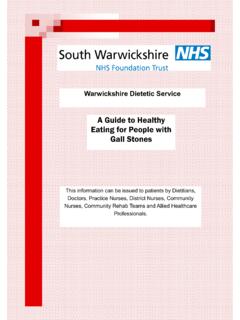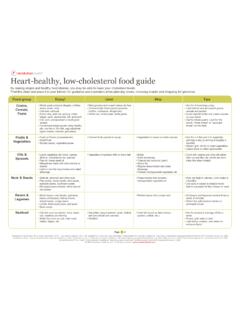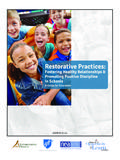Transcription of HEART FAILURE NUTRITION - eating for a healthy heart
1 NEMO This is a consensus document from Dietitian/ Nutritionists from the NUTRITION Education Materials Online, "NEMO", team. Disclaimer: Reviewed: March 2018 Due for review: March 2020 HEART FAILURE NUTRITION eating for a healthy HEART Text here HEART healthy Diet Fats and oils Check salt in foods Label reading Fluid intake (optional) Useful resources and apps Myth Busters (optional) Topics: Text here HEART healthy Diet Text here HEART healthy Diet High in Antioxidants Dietary fibre Micronutrients Moderate in healthy unsaturated fats Low in Saturated fat Trans Fat Added sugar Salt (sodium) Text here Cereals and Grains Aim for 4-6 serves/day (or to match energy needs).
2 Choose wholegrain and high fibre cereal options. 1 serve= 1 slice of bread bread roll cup cooked pasta/rice/noodles 1 small scone Text here Vegetables Aim for 5 or more serves/day. 1 serve = cup cooked vegetables 1 cup salad vegetables cup legumes/beans Text here Fruit Aim for 2 serves/day. 1 serve = Medium size piece of fruit cup tinned fruit cup (125ml) fruit juice 1 tbls dried fruit Text here How to eat more fruit and vegetables Have fresh or tinned fruit as snacks Add chopped fruit or dried fruit to your cereal Include salad vegetables on sandwiches or rolls Make plant based foods the main part of each meal (aim to fill half the dinner plate) salad with chickpeas or kidney beans.
3 Try a vegetarian meal once or twice a week Meat Free Monday Text here Dairy Products Aim for 3-4 serves/day Great source of protein, calcium and Vitamin D 1 serve = 1 cup (250ml) milk 1 cup (250ml) rice/soy/cereal drink (cal cium fortified) 200g tub yoghurt 2 slices (40g) cheese Try to choose reduced fat, high calcium products If choosing dairy alternative drinks ensure that they are fortified with calcium and vitamin D. Text here Meat/ Meat Alternatives Aim for 2-3 serves/day.
4 Good source of protein, iron and vitamin B6 and B12. 1 serve = 65g cooked lean meat 80g cooked lean poultry 100g cooked fish fillet 2 eggs 1 cup legumes/ beans 30g (small handful) nuts/ seeds Text here healthy Plate Model Lean protein Low GI carbohydrate Free vegetables Text here HEART healthy Snack Ideas 200g low fat yoghurt 30g unsalted nuts Medium size piece of fruit Vegetable sticks with hommus Low fat cheese or avocado with wholegrain crackers Tinned tuna/ salmon (in springwater)
5 With wholegrain crackers Text here Waist Circumference The location of fat on your body can be a risk factor for chronic disease. Excess body fat around your organs or midsection can increase your health risk. Aim for: Men: < 94cm Women: <80cm Body Mass Index (BMI) and waist circumference should be used in combination to assess your chronic disease risk. healthy BMI range <65 yrs= healthy BMI range >65yrs= 24-30kg/m2 Text here Risks associated with being overweight Increases your risk of chronic disease conditions HEART disease, diabetes, hypertension.
6 Overweight/obesity is a risk factor for premature mortality. Associated with low energy levels. Increased difficulty mobilising. Text here Tips for losing weight Use the Australian guide to healthy eating as a guide for portion sizes. Use the healthy plate model for your main meals. Choose low fat dairy products. Limit high sugar foods soft drink, juice, chocolate, lollies. Regular sleeping pattern. Text here Risks Associated with being underweight >65 years underweight= BMI <24kg/m2 Compromised immune system.
7 Low energy levels. Loss of muscle mass/ strength which can lead to increased shortness of breath. Difficulty mobilising. Increased risk of falls. Increased risk of becoming malnourished. <65 years underweight = BMI < Text here Tips for gaining weight Consume small frequent meals throughout the day. Don t rely on your appetite to eat. Try to eat every few hours. Include a protein source at each meal. Prioritise foods that are high in energy and protein Meat/ meat alternatives, dairy products, nuts/ seeds, legumes, avocado, vegetable oils.
8 Fortify foods with healthy fats and oils. Talk to your Dietitian about commencing a NUTRITION supplement. Text here High energy and protein foods Text here Fats and Oils Text here What is cholesterol? LDL (BAD) Cholesterol Can block blood vessels, leading to increased blood pressure (BP) and risk of cardiovascular disease (CVD) HDL (Good) Cholesterol Helps prevent HEART disease- takes cholesterol in the arteries back to the liver for removal Triglycerides Type of blood fat High levels are associated with increased risk of HEART disease Dietary cholesterol can increase blood cholesterol but not as much as saturated fat.
9 Text here What is dietary fat? Saturated Fats Animal fat Butter Lard Processed foods. Trans Fats Processed foods. Risk of HEART Disease Total/LDL Cholesterol Polyunsaturated Fats Fish Vegetables oils Monounsaturated Fats Olive oil Nuts Avocado Risk of HEART Disease Improve Cholesterol Profile Text here Saturated Fat Found mostly in animal based products, processed foods and some oils coconut/ palm oil. A diet high in saturated fat can increase your ca rdiovascular disease risk.
10 Aim for saturated fat intake <7% of total energy intake. Currently the average Australian consumes about twice this recommendation. Text here Trans Fat Acts like a saturated fat in the body. Found mostly in processed foods as it is formed during the hydrogenation process of vegetable oils as a result of food manufacturing. Reducing the amount of saturated fat in your diet will also reduce the amount of trans fats you consume. In Australia hydrogenation is no longer used, margarines and polyunsaturated oils in the supermarket contain negligible amounts of trans fat s.















